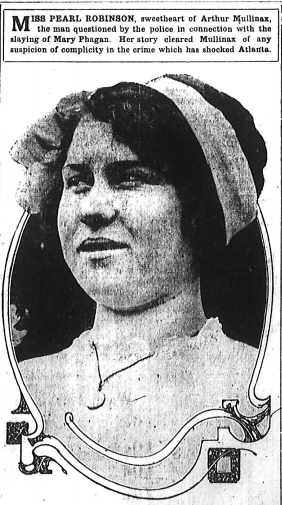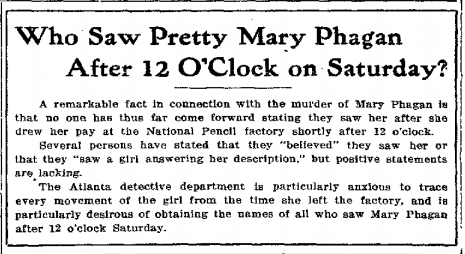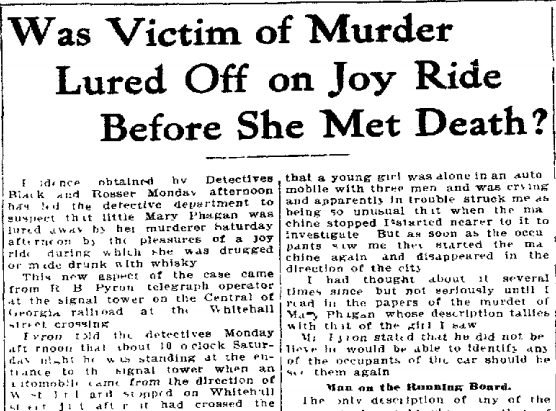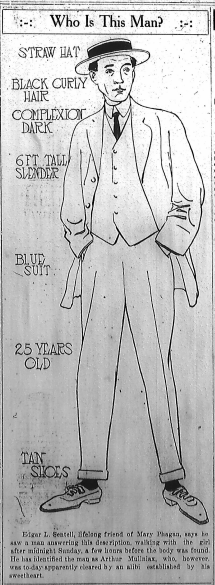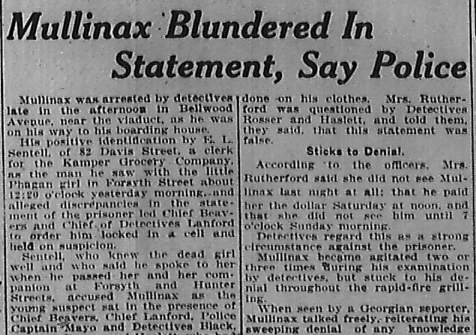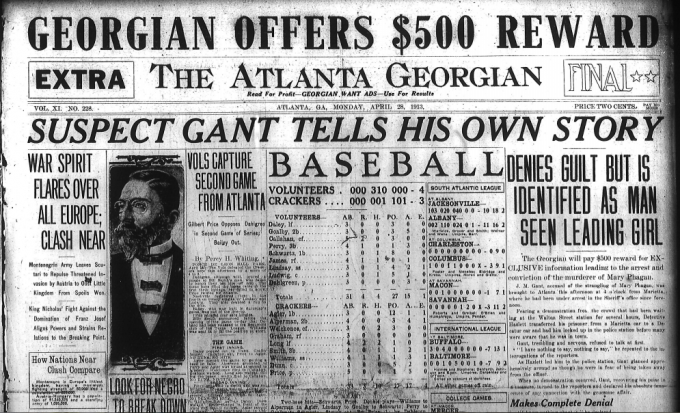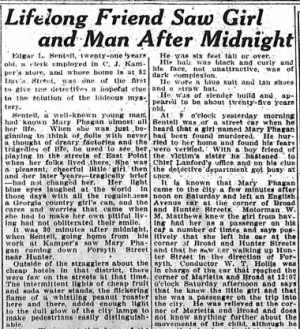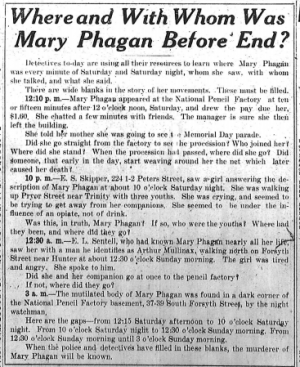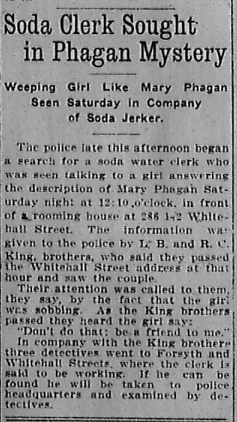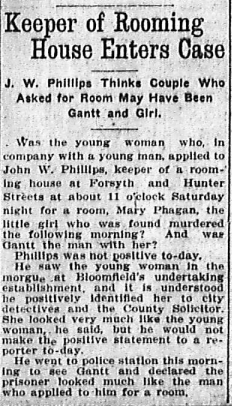 Another in our series of new transcriptions of contemporary articles on the Leo Frank case.
Another in our series of new transcriptions of contemporary articles on the Leo Frank case.
Atlanta Georgian
Tuesday, April 29th, 1913
J. W. Phillips Thinks Couple Who Asked for Room May Have Been Gantt and Girl.
Was the young woman who, in company with a young man, applied to John W. Phillips, keeper of a rooming house at Forsyth and Hunter Streets at about 11 o’clock Saturday night for a room, Mary Phagan, the little girl who was found murdered the following morning? And was Gantt the man with her?
Phillips was not positive to-day.
He saw the young woman in the morgue at Bloomfield’s undertaking establishment, and it is understood he positively identified her to city detectives and the County Solicitor. She looked very much like the young woman, he said, but he would not make the positive statement to a reporter to-day. Continue Reading →

